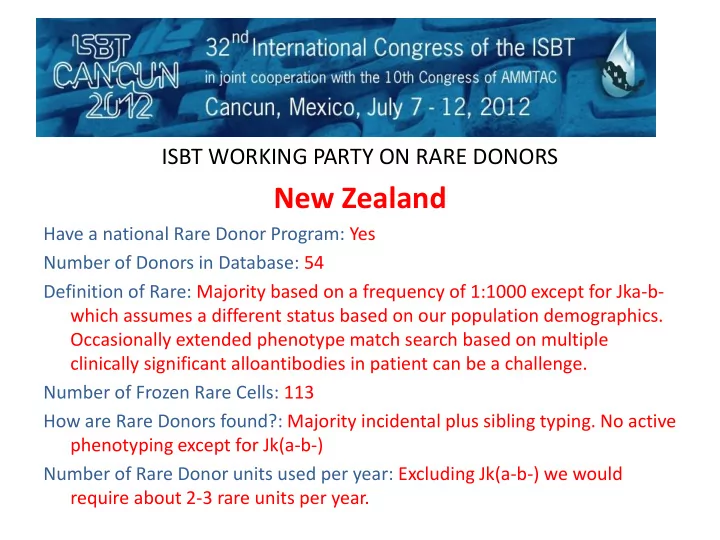

ISBT WORKING PARTY ON RARE DONORS New Zealand Have a national Rare Donor Program: Yes Number of Donors in Database: 54 Definition of Rare: Majority based on a frequency of 1:1000 except for Jka-b- which assumes a different status based on our population demographics. Occasionally extended phenotype match search based on multiple clinically significant alloantibodies in patient can be a challenge. Number of Frozen Rare Cells: 113 How are Rare Donors found?: Majority incidental plus sibling typing. No active phenotyping except for Jk(a-b-) Number of Rare Donor units used per year: Excluding Jk(a-b-) we would require about 2-3 rare units per year.
ISBT WORKING PARTY ON RARE DONORS New Zealand Shipping Outcome form used?: Yes. Only once since implementation. Request for -D- liquid unit from Japan for transfusion to neonate. Most difficult types to find: With what we have searched for in the past our biggest challenge was to find Ko blood for one patient who died post transplant (more than 3 years ago). Haven’t had issues with other rare types since.
ISBT WORKING PARTY ON RARE DONORS New Zealand • Other items of interest: 9/113 frozen units do not meet our serological/NAT accreditation requirements. 17/113 do not meet NAT accreditation requirements. 12/113 stored only for autologous use. We have seen a significant shift to allogeneic storage only. Generally autologous storage is discouraged unless specifically required during planned surgery. Locally apart from Jka-b- we have only used frozen Lub- units for planned surgery in the past year.
Recommend
More recommend